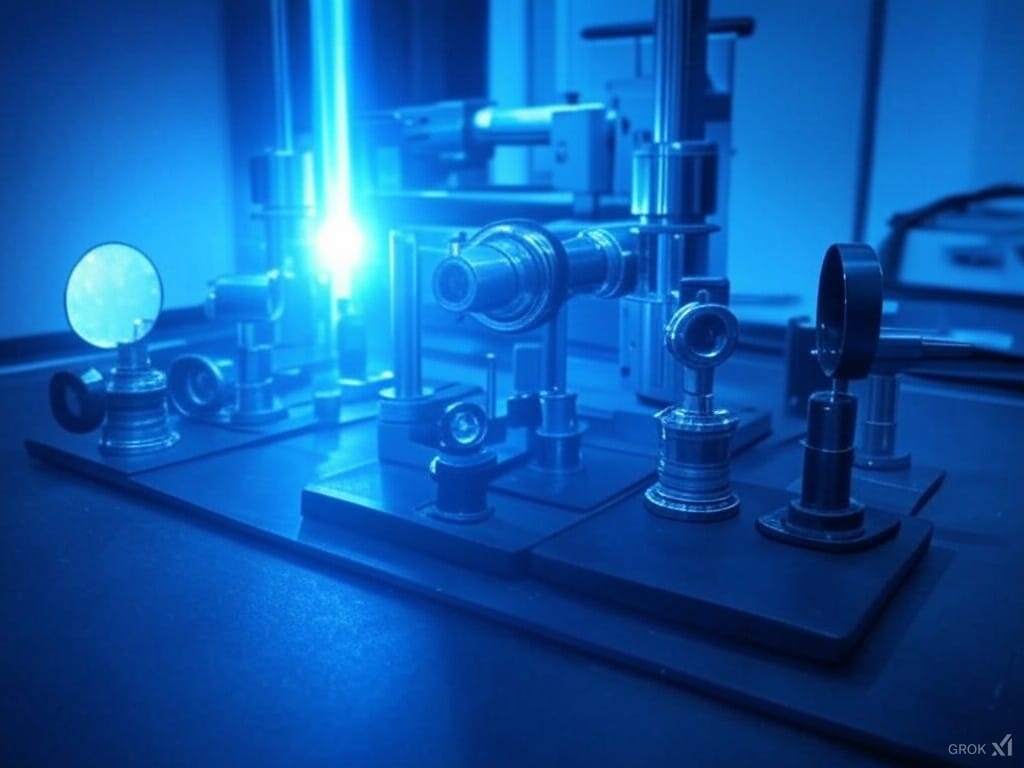Sure! Here is the translation of your text into American English:
—
A team of researchers from the California Institute of Technology (Caltech) has made a revolutionary breakthrough in computing with the creation of an optical supercomputer capable of reaching a speed of 100 GHz, marking a turning point in modern computing. This innovative design moves beyond transistors and electricity, using light as a medium to process data. This advancement promises to redefine the future of fields such as telecommunications, artificial intelligence, and autonomous driving.
What is an Optical Computer and Why is it Different?
Optical computers do not rely on electricity to process data, as is the case in traditional transistor-based systems. Instead, they use light, specifically laser pulses, to perform calculations at unprecedented speed and efficiency. Caltech’s supercomputer employs an optical cavity that serves both as memory and a computation layer, allowing optical signals to travel and process data at the speed of laser pulses.
According to the researchers, this technology overcomes two significant limitations of classical computing:
- The energy bottleneck: By using light instead of electricity, issues such as overheating and excessive energy consumption, that characterize electrical processors, are eliminated.
- The data transmission limitation: Optical signals allow for faster and more efficient transmission compared to electrical cables.
The Impact of the Optical Supercomputer: Real-World Applications
This new design not only promises to surpass the capabilities of current CPUs and GPUs but also opens the door to entirely new applications. Key areas include:
- Image Generation and Classification: Thanks to its ultra-fast processing capability, the optical supercomputer could be key in medical and satellite imaging tasks, as well as in computer vision applications.
- Autonomous Vehicles: Researchers believe this technology will revolutionize autonomous driving systems, improving response times and decision-making capabilities in real-time.
- Time Series Prediction: In fields like economics, climate, and health, this supercomputer can analyze large volumes of historical data to more accurately predict future events.
- High-Speed Telecommunications: By eliminating the speed limitations of electrical transmissions, optical systems could enable faster and more reliable networks.
Key Advantages of Optical Design
- Unmatched Speed: At 100 GHz, this system far exceeds the frequencies of current CPUs, which barely reach 6 GHz.
- Energy Efficiency: By eliminating transistors and electricity, energy consumption is drastically reduced, making it a more sustainable option.
- Innovation in Architecture: The optical cavity that acts as both memory and processor breaks with traditional hardware design, optimizing performance for specific tasks.
The Race for the Future: Competing with Quantum Computing
While quantum computing has been the focus of numerous developments, optical computers are emerging as a complementary alternative. While quantum computers are ideal for solving extremely complex problems, optical computers excel in massive data processing tasks and speed of transmission.
Compared to recent advancements by Microsoft in its Analog Iterative Machine, this optical supercomputer from Caltech marks a significant leap, demonstrating that light could be the future of computing.
A Step Toward the New Era of Computing
Caltech’s optical supercomputer not only represents a technical advancement but also a paradigm shift in how we conceive and design computing systems. The potential to integrate this technology into autonomous vehicles, telecommunications networks, and artificial intelligence systems opens up a world of possibilities.
With the development of complementary technologies such as enhanced logic gates and hybrid architectures, optical computing is positioned to play a crucial role in critical areas, from imaging to real-time decision-making.
In the researchers’ words: “We are just starting to understand the potential of this technology. What is today a supercomputer could be the basis for smaller and more accessible devices in the future.”
What’s Next?
As this technology is refined, the next challenge will be to scale and adapt these systems for commercial and residential applications. With current advancements, the future of computing seems to be drawing closer to the light.
References: MyDrivers and El chapuzas informático
—
Let me know if you need any further assistance!

